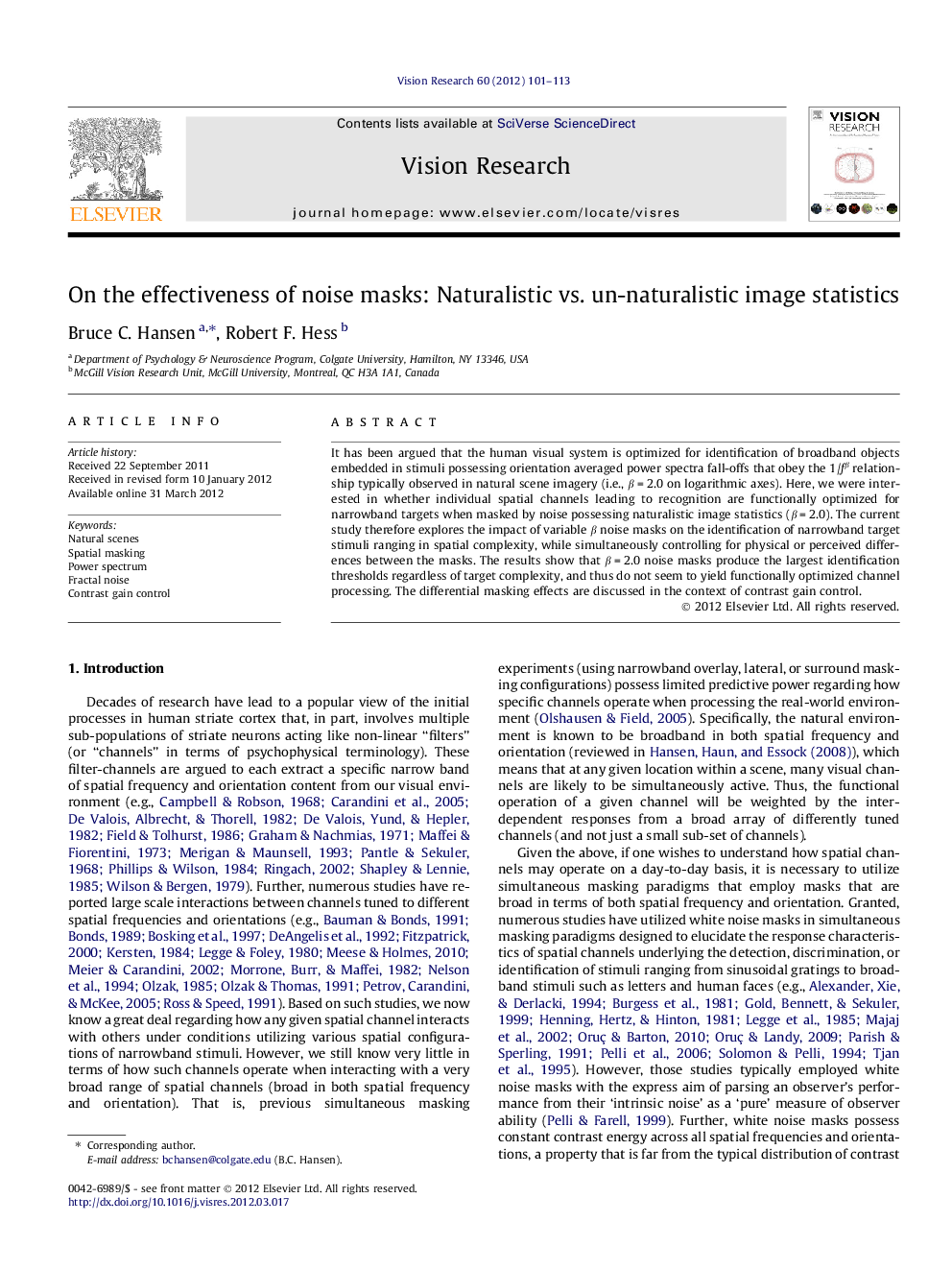| Article ID | Journal | Published Year | Pages | File Type |
|---|---|---|---|---|
| 4033966 | Vision Research | 2012 | 13 Pages |
It has been argued that the human visual system is optimized for identification of broadband objects embedded in stimuli possessing orientation averaged power spectra fall-offs that obey the 1/fβ relationship typically observed in natural scene imagery (i.e., β = 2.0 on logarithmic axes). Here, we were interested in whether individual spatial channels leading to recognition are functionally optimized for narrowband targets when masked by noise possessing naturalistic image statistics (β = 2.0). The current study therefore explores the impact of variable β noise masks on the identification of narrowband target stimuli ranging in spatial complexity, while simultaneously controlling for physical or perceived differences between the masks. The results show that β = 2.0 noise masks produce the largest identification thresholds regardless of target complexity, and thus do not seem to yield functionally optimized channel processing. The differential masking effects are discussed in the context of contrast gain control.
► Identification thresholds depend of the 2nd-order luminance statistics of noise masks. ► Strongest masking was observed with ‘naturalistic’ noise. ► The results could not be explained by the physical or perceived differences of the masks. ► The results are explained in the context of contrast gain control.
